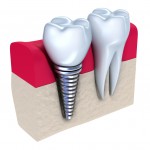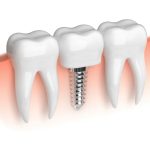Bone Grafting is a surgical procedure to increase bone volume with natural bone, artificial or synthetic. It is used for a variety of reasons, including to increase stability of dentures (false teeth), to repair bone trauma or to repair a bone defect caused by periodontal disease. However, the main use of grafting is to allow the placement of dental implants. This may be necessary when the jawbone does not have the required height to contain the implant, when the thickness of the bone is not large enough compared to the diameter of the implant, or when there is a lack of bone on the outside or the inside of the jaw.
Why does jawbone loss occur?
First, you must know that it is the presence of teeth that stimulates the maintenance of bone volume of the jaws. So when the patient has lost several teeth, it is normally due to bone loss. In addition, the maxillary sinus also plays a role in this process. The sinuses are air-filled cavities located above the teeth of the upper jaw. When the posterior teeth are gone, sinuses tend to occupy more space in the bone, which decreases the height.
How is a bone graft done?
Local anesthesia, with or without intravenous sedation, is favored if the graft is from the chin or the ascending branch of the mandible (jaw). However, if the bone is taken from elsewhere on the body, dentists prefer to opt for general anesthesia. This provides more comfort for the patient. The surgeon will make the adaptation and implementation of Bone Grafting bolts to stabilize the procedure. A period of several months will be required for the integration of the graft. Radiography will then confirm that the bone is prepared to receive the implant.
How is the bone graft performed?
A transplant sinus lift is performed when an implant installation at the rear of the upper jaw is desired, and the jawbone does not have the required height. Following anesthesia, the surgeon opens a small window in the bone of the sinus. It separates the bone membrane lining from the inside of the sinus to raise it enough to insert the bone graft underneath it. Natural or synthetic bone particles can be used. After several months of healing, dentists can proceed with the installation of dental implants. For more information, contact Business Name.








